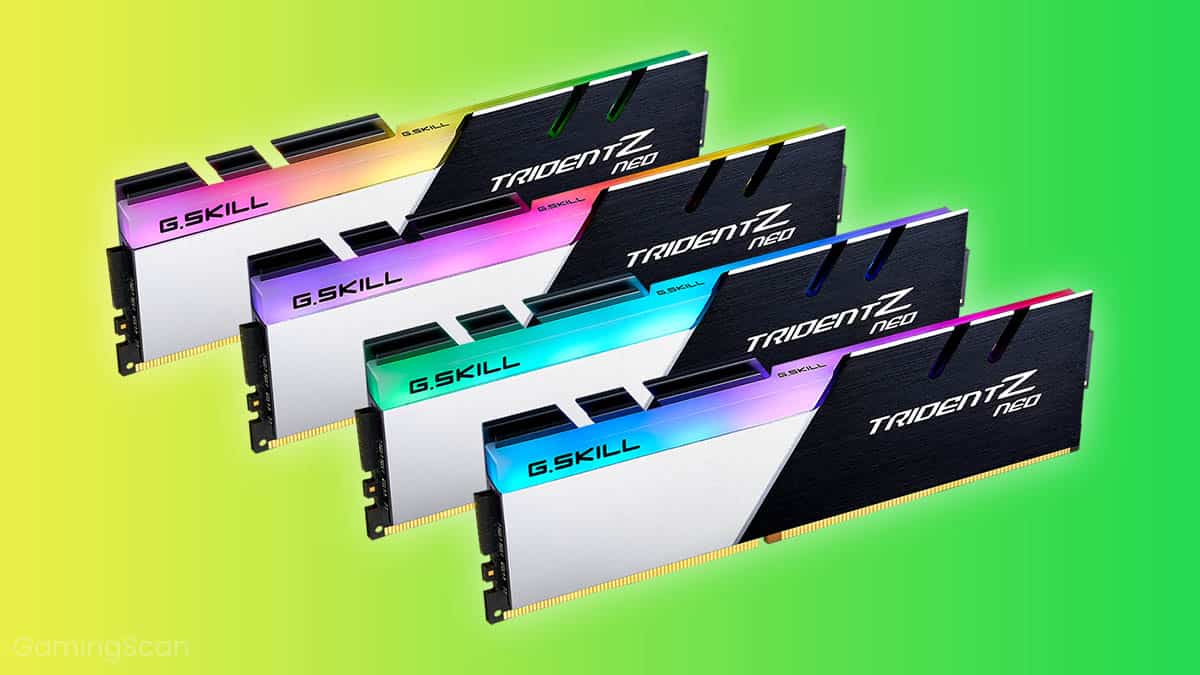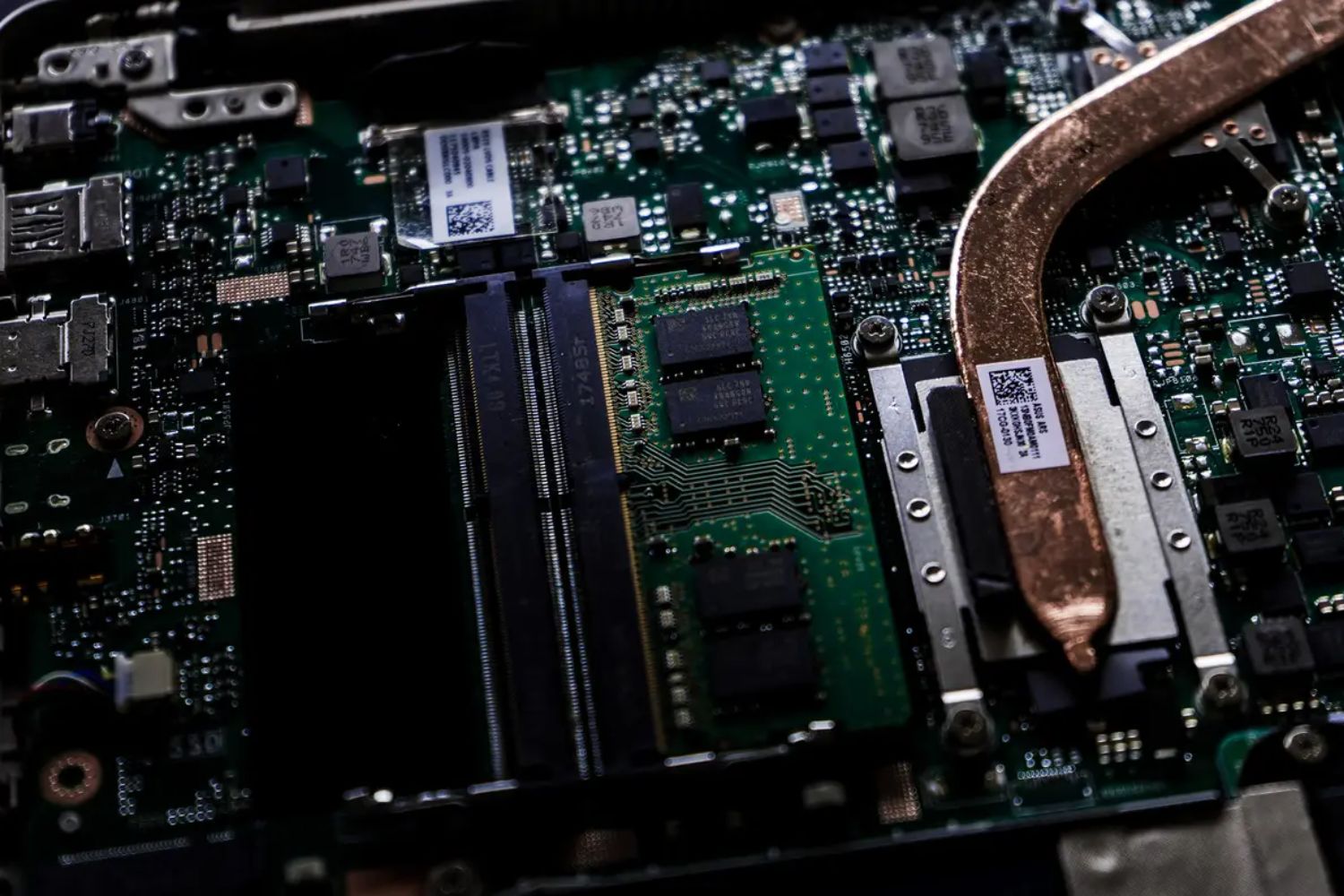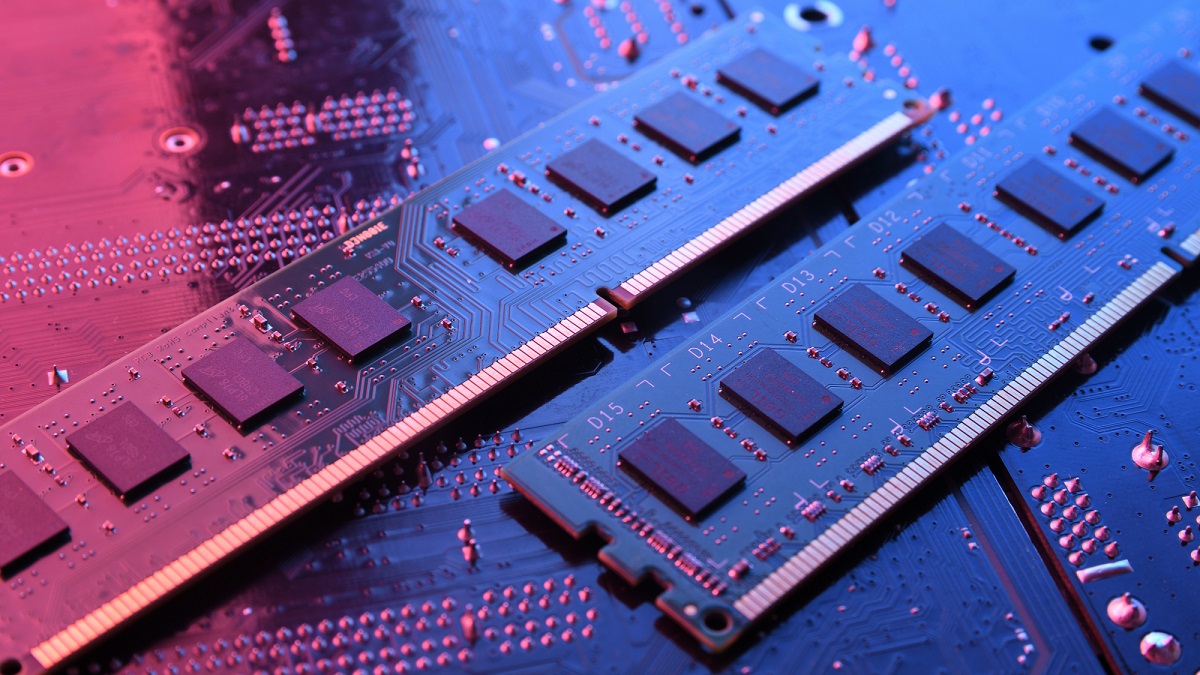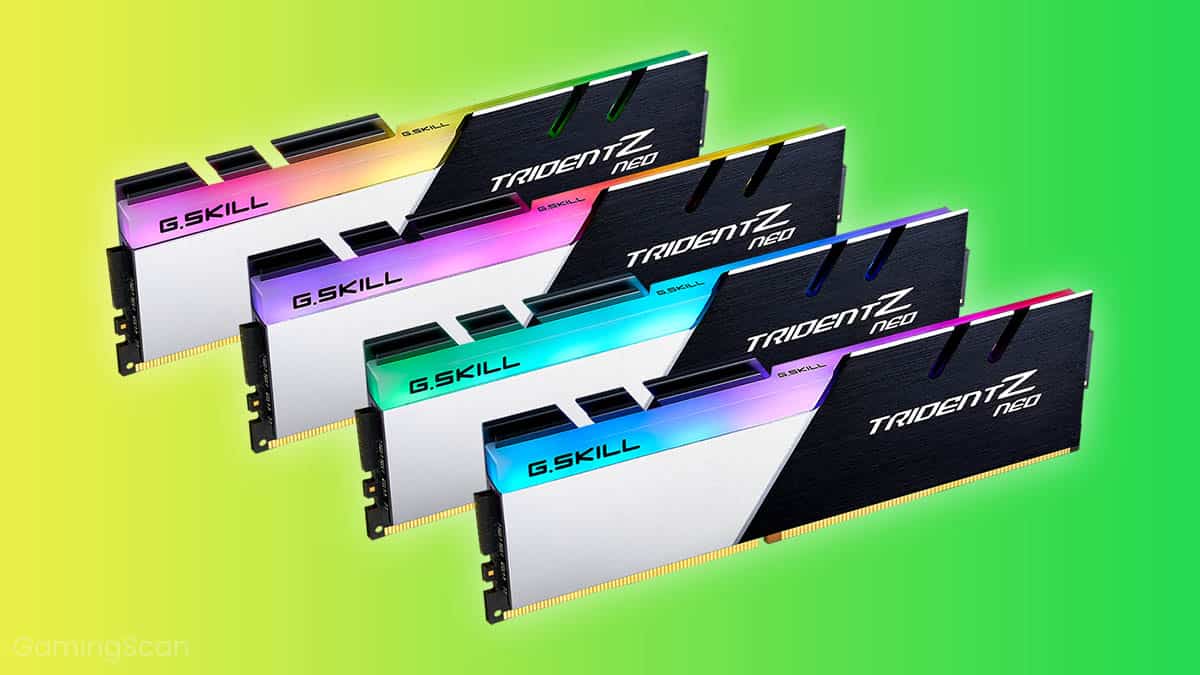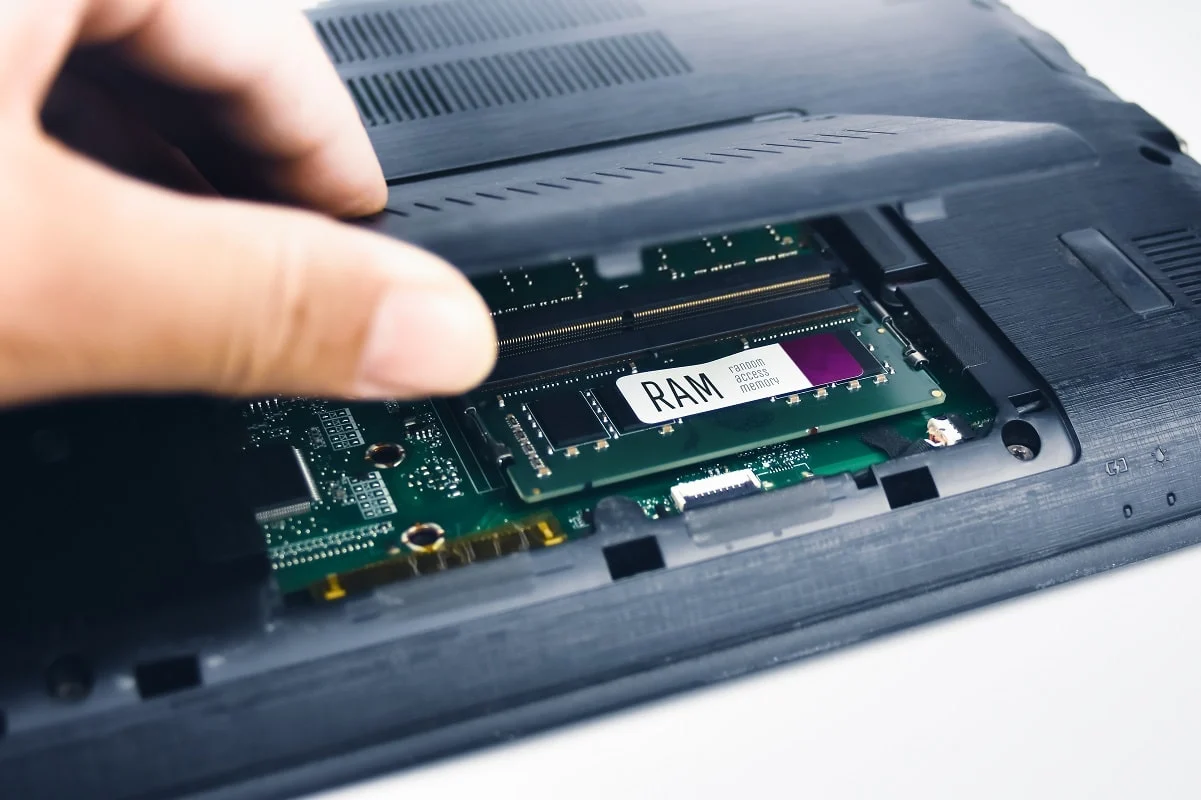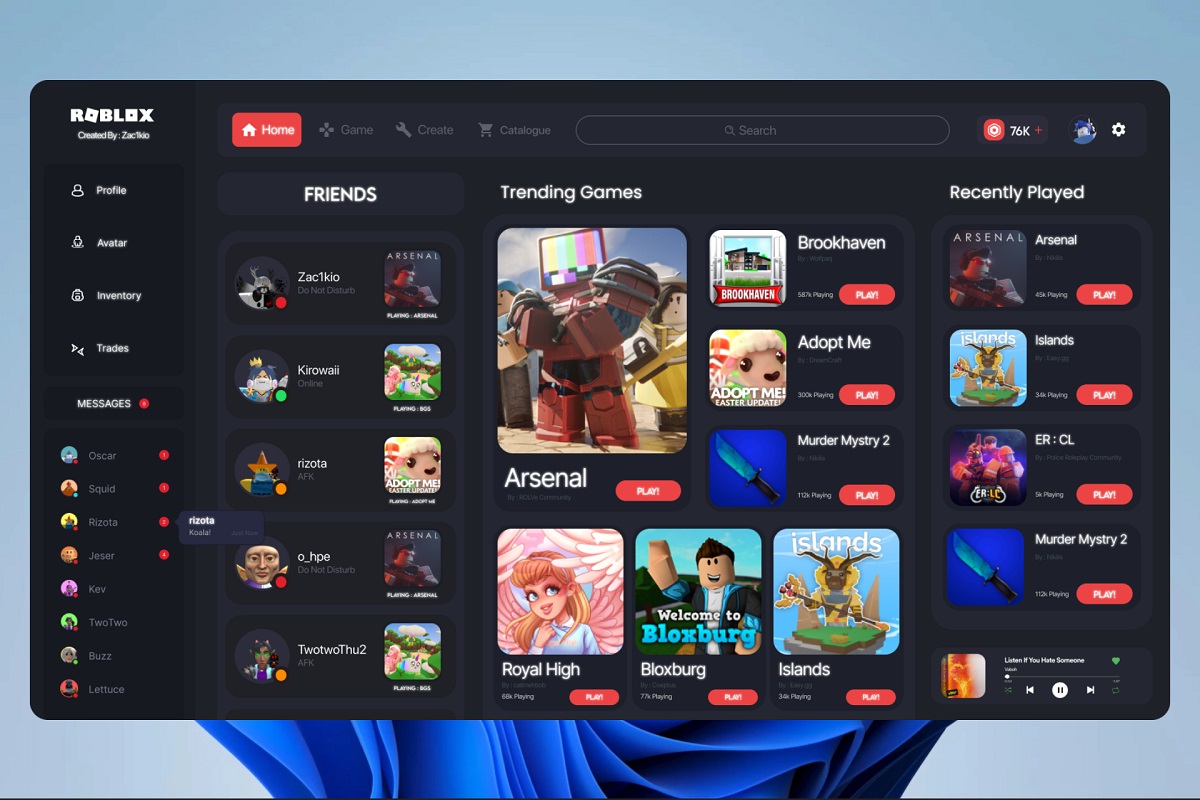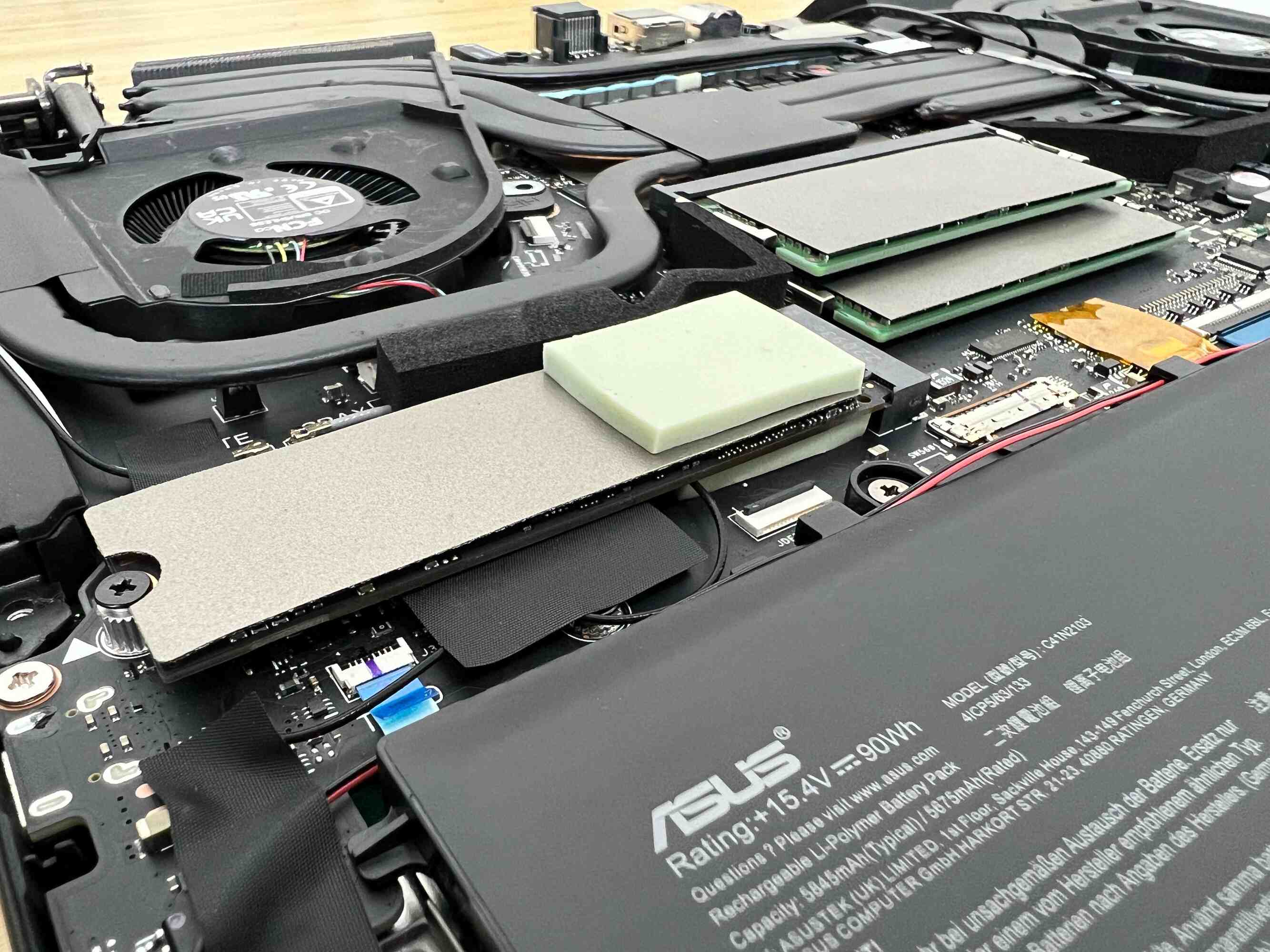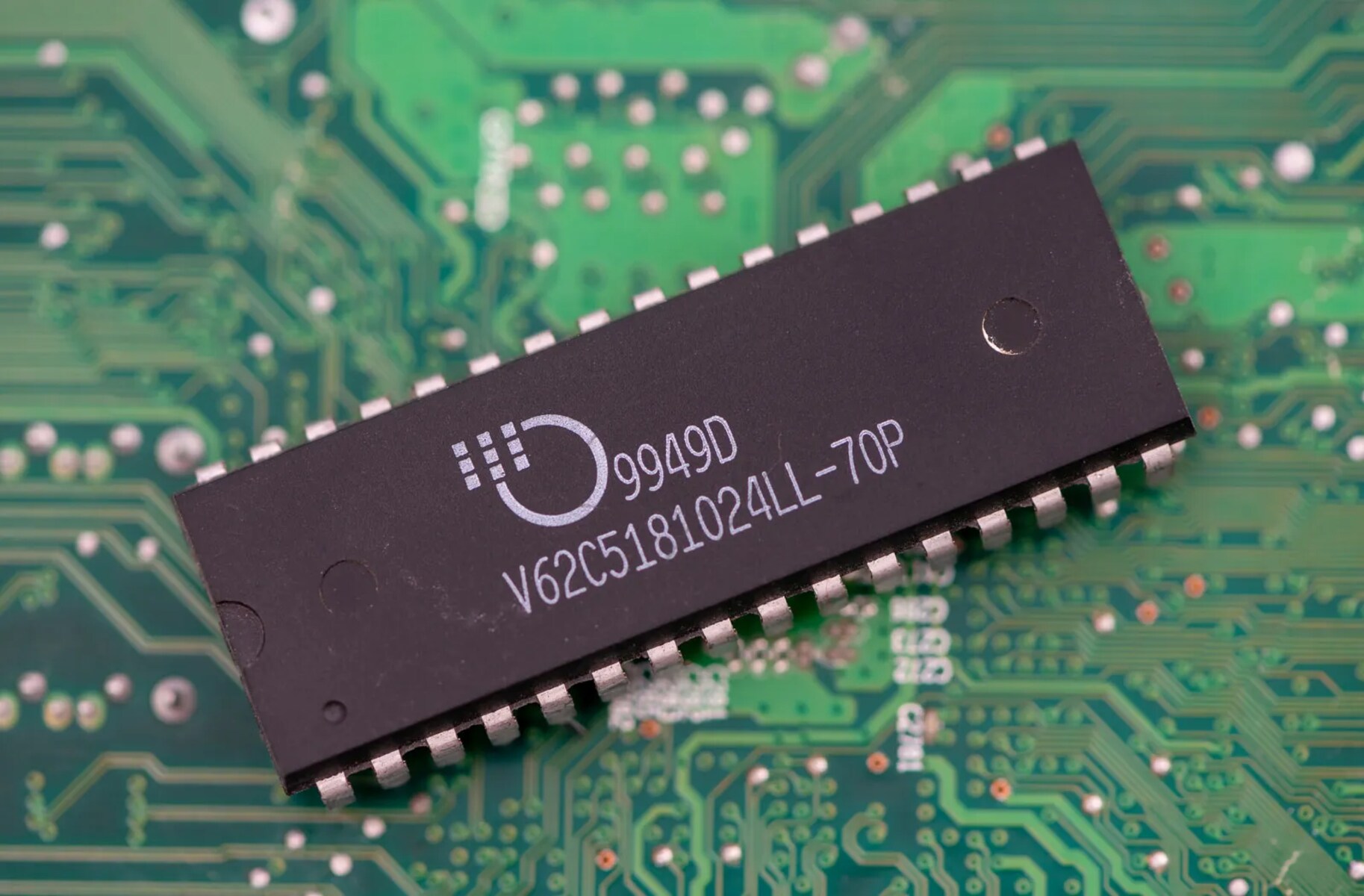Importance of RAM in Gaming
When it comes to gaming, having enough RAM is crucial for optimal performance. RAM, or Random Access Memory, acts as a temporary storage for the data that your computer needs to access quickly. In gaming, this means that having sufficient RAM can greatly improve load times, reduce lag, and allow for smoother gameplay.
One of the most important aspects of gaming is the ability to quickly load and process large amounts of data. Whether it’s the textures, character models, or the game itself, having adequate RAM ensures that everything can be stored and accessed efficiently. Insufficient RAM can lead to stuttering, freezing, and long loading times, which can greatly diminish the gaming experience.
In addition to providing a smooth gaming experience, having enough RAM also allows for better multitasking. Many gamers like to run multiple programs simultaneously, such as voice chat software, streaming applications, and web browsers. With sufficient RAM, you can easily switch between these applications without any performance degradation.
Another important factor to consider is the size of the game you’re playing. AAA titles and modern games often require more RAM to run smoothly. These games have larger file sizes and more complex graphics, thus demanding greater memory resources. Insufficient RAM may force the game to rely on virtual memory, resulting in slower performance and a less enjoyable gaming experience.
Furthermore, having enough RAM can future-proof your gaming setup. As technology advances, games will continue to become more resource-intensive. By investing in more RAM, you ensure that your system can handle the requirements of upcoming games without the need for a complete hardware upgrade.
In summary, RAM plays a crucial role in gaming by providing quick access to data, reducing load times, minimizing lag, and allowing for smooth gameplay. It also facilitates multitasking, accommodates larger game sizes, and future-proofs your gaming setup. To ensure a stellar gaming experience, it’s essential to have enough RAM to meet the minimum requirements of the games you play and consider investing in additional RAM for optimal performance.
Minimum RAM Requirements for Gaming
When it comes to gaming, meeting the minimum RAM requirements is essential to ensure that games run smoothly and without issues. The amount of RAM needed can vary depending on the specific game and its system requirements. Generally, most games today recommend a minimum of 8GB of RAM to run properly.
Having 8GB of RAM allows your computer to handle the basic processes required by the game, such as loading textures, rendering graphics, and managing AI interactions. This amount of RAM is sufficient for playing many popular titles and ensures a decent gaming experience.
However, it’s important to note that some games may have higher minimum RAM requirements. AAA titles or graphically demanding games might recommend 16GB or even more RAM for optimal performance. These games often have larger file sizes and require more memory to store and process the intricate details of their environments and characters.
The minimum RAM requirements for gaming can also be influenced by other factors, such as the operating system you are using and the other applications running in the background. Running resource-heavy programs alongside a game can put additional strain on your system’s memory. It’s important to take these factors into consideration and allocate enough RAM to accommodate the game and any concurrent processes.
If you’re unsure about the minimum RAM requirements for a specific game, it’s always recommended to check the official system requirements provided by the game developer. These requirements will outline the minimum and recommended RAM specifications to ensure optimal performance.
To summarize, meeting the minimum RAM requirements for gaming is crucial to ensure smooth gameplay and avoid performance issues. While 8GB of RAM is generally considered the minimum, some games may require higher amounts of RAM to run optimally. Understanding the specific game’s system requirements, considering any concurrent processes, and allocating enough RAM accordingly will result in an enjoyable gaming experience.
Recommended RAM for Gaming
While meeting the minimum RAM requirements is essential, having more RAM than the bare minimum can result in smoother gameplay, faster load times, and overall improved performance. The recommended amount of RAM for gaming depends on several factors, including the types of games you play and your overall usage requirements.
For most gamers, 16GB of RAM is the sweet spot for optimal performance. This amount of RAM provides enough headroom to handle graphically demanding games and allows for seamless multitasking without any noticeable slowdowns. It’s worth noting that 16GB of RAM has become the standard recommendation in recent years due to the increasing resource requirements of modern games.
If you’re a hardcore gamer, content creator, or streamer, you may want to consider investing in even more RAM. 32GB or 64GB of RAM offers an abundance of memory for handling not just games but also resource-intensive applications like video editing software, 3D modeling tools, and virtual machines. This ensures smooth simultaneous multitasking and allows for quick and efficient rendering and processing of content.
The recommended amount of RAM also depends on the operating system you’re using. While 8GB of RAM may be sufficient for gaming on older operating systems, newer versions like Windows 10 often require more memory to run smoothly. The additional RAM helps to accommodate the OS overhead and allows for a better overall experience.
In addition to the amount of RAM, it’s important to consider the RAM speed (also known as RAM frequency). Higher RAM speeds can provide a slight boost in performance by allowing the memory to transfer data at a faster rate. However, it’s important to note that the impact of RAM speed on gaming performance is generally minimal compared to the amount of RAM itself.
To conclude, while meeting the minimum RAM requirements is crucial, having more RAM than the minimum recommendation can vastly improve your gaming experience. 16GB of RAM is generally considered the recommended amount for most gamers, providing a good balance between performance and cost. However, if you engage in resource-intensive tasks or prefer to future-proof your system, investing in even more RAM can be beneficial. Remember to also consider the RAM speed for a slight performance boost.
How Does RAM Affect Gaming Performance?
RAM, or Random Access Memory, plays a significant role in determining the performance of a gaming system. It affects various aspects of gaming, including load times, frame rates, and overall smoothness of gameplay.
One of the primary ways RAM impacts gaming performance is by allowing the system to store and access data quickly. When you launch a game, it loads various assets such as textures, models, and audio files into RAM for faster access. The more RAM available, the more data that can be loaded, reducing loading times and ensuring a smooth and seamless gaming experience.
Insufficient RAM can lead to frequent loading stalls, as the system has to swap data in and out of the memory to accommodate new information. This can result in longer load times, stuttering, and reduced frame rates, negatively impacting the overall gameplay experience.
Another significant impact of RAM on gaming performance is its ability to handle multiple tasks simultaneously. When you play a game, your system may need to perform other processes in the background, such as running streaming software, voice chat programs, or antivirus scans. With adequate RAM, these background tasks can run smoothly without causing performance issues in the game. However, limited RAM can lead to bottlenecks, causing both the game and other processes to slow down or even crash.
RAM also plays a critical role in storing temporary data from the game. During gameplay, the system constantly accesses and modifies data related to your progress, character stats, level details, and more. With insufficient RAM, the system may have to rely on virtual memory, which is significantly slower than physical RAM. This can result in slowdowns, hitching, and increased input lag during gameplay.
It’s important to note that the impact of RAM on gaming performance is not limited to its size alone. RAM speed, as measured in megahertz (MHz), also plays a role. Higher RAM speeds allow for faster data transfer between the RAM and other components, such as the CPU and graphics card. However, the difference in gaming performance between different RAM speeds is often minimal and may not be noticeable unless you’re using high-end hardware or engaging in competitive gaming.
In summary, RAM greatly affects gaming performance by allowing for faster data loading, smoother multitasking, and better handling of temporary game data. Insufficient RAM can result in longer loading times, reduced frame rates, and performance issues when multitasking. Both the size and speed of RAM influence performance, but it’s important to consider other hardware factors as well for a well-rounded gaming system.
Upgrading Your RAM for Gaming
If you’re experiencing performance issues or want to enhance your gaming experience, upgrading your RAM can be a worthwhile investment. Upgrading your RAM can provide various benefits, such as faster loading times, smoother gameplay, and improved multitasking capabilities.
Before upgrading your RAM, you need to consider your computer’s specifications and limitations. Check the motherboard’s documentation or manufacturer’s website to determine the type and maximum capacity of RAM supported. It’s important to ensure compatibility between the new RAM modules and your system to avoid any issues.
The first step in upgrading your RAM is identifying the current RAM configuration in your system. You can use system monitoring software or check the information in the BIOS. Note the type, speed, and capacity of the existing RAM modules. This information will help you select compatible RAM for the upgrade.
When selecting new RAM modules for gaming, consider the capacity and speed. Aim for a higher capacity, such as 16GB or 32GB, to ensure you have enough memory for resource-intensive games and multitasking. However, keep in mind that increasing the RAM capacity alone won’t always lead to significant performance improvements if other hardware components are the limiting factor.
RAM speed, measured in MHz, also plays a role in overall performance. While higher RAM speeds can offer a slight boost, the impact is often minimal in gaming. However, if you have high-end hardware and engage in competitive gaming or other demanding tasks, investing in faster RAM may be beneficial.
Once you have selected the new RAM modules, it’s time to install them. Ensure that you have grounded yourself to prevent any static electricity damage. Start by shutting down your computer and disconnecting the power. Open the computer case and locate the RAM slots on the motherboard. Carefully remove the existing RAM modules by releasing the holding clips on each side. Insert the new RAM modules into the empty slots, aligning the notches correctly. Apply gentle pressure until the RAM clicks into place. Finally, close the computer case, reconnect the power, and power on your system.
After upgrading the RAM, it’s recommended to run a system diagnostic utility to ensure that the new RAM is detected and functioning properly. This will also allow you to verify the correct capacity and speed settings.
In summary, upgrading your RAM can significantly improve your gaming experience by providing faster performance, smoother gameplay, and better multitasking capabilities. Before upgrading, ensure compatibility with your system and consider factors such as capacity and speed. With proper installation and configuration, you’ll be able to enjoy a more responsive and efficient gaming setup.
Overclocking RAM for Better Gaming Experience
Overclocking RAM is a popular technique used by gamers and enthusiasts to squeeze out extra performance from their systems. By increasing the operating speed of your RAM beyond its default specifications, you can potentially achieve faster data transfer rates and improved gaming performance.
Before attempting to overclock your RAM, it’s important to understand the risks and limitations involved. Overclocking may void your warranty and can potentially cause system instability or data corruption if done incorrectly. Additionally, not all RAM modules are capable of being overclocked, so it’s crucial to check the specifications and manufacturer recommendations for your specific RAM model.
To begin overclocking your RAM, you’ll need to access your computer’s BIOS or UEFI settings. Restart your system and enter the BIOS by pressing the appropriate key (often Del, F2, or Esc) during startup. Once in the BIOS, navigate to the memory settings or advanced settings section.
One of the main settings to adjust when overclocking RAM is the memory frequency, often displayed in MHz. Increasing the frequency will result in faster RAM performance. It’s important to note that not all RAM modules can handle high frequencies, so it’s recommended to start with small increments, such as 5-10MHz, and gradually test stability before making further adjustments.
In addition to the memory frequency, you may also need to adjust the memory timings, which are the settings that control the speed of various operations within the RAM module. Tightening the timings can lead to improved performance, but it requires careful adjustments and testing for stability. Each BIOS may have different terminology and options for adjusting timings, such as CAS latency, RAS to CAS delay, and write recovery time.
After making adjustments to the memory settings, save the changes and restart your system. To ensure stability, it’s important to stress test your overclocked RAM. There are various software tools available, such as MemTest86 or Prime95, that can help you verify the stability of your RAM by performing rigorous memory tests. If you encounter any errors or system crashes during the stress test, it usually indicates an unstable overclock, and you may need to reduce the frequency or adjust the timings.
It’s essential to monitor the temperatures of your RAM modules and ensure they remain within safe limits during overclocking. High temperatures can lead to reduced stability and potential damage to the RAM. If necessary, improve airflow in your system or consider purchasing RAM heatsinks or fans to keep the modules cool.
Overclocking RAM can provide noticeable improvements in gaming performance by allowing the RAM to transfer data at faster speeds. However, the extent of performance gains will vary depending on other hardware components and the specific demands of your games. It’s important to keep in mind that overclocking is not risk-free, and the results may vary between different RAM modules and systems.
In summary, overclocking RAM can be an effective way to enhance your gaming experience by increasing memory performance. However, it requires careful adjustments, stress testing, and monitoring to ensure stability and prevent potential damage. If you decide to overclock your RAM, be sure to research your specific RAM model, start with conservative adjustments, and test for stability to achieve the best results.
Impact of RAM Speed on Gaming
The speed of your RAM, also known as its frequency, plays a role in gaming performance. While RAM capacity is often a primary consideration, the speed at which data can be transferred between the RAM and other components of your system can also impact gaming experience to some extent.
RAM speed is measured in megahertz (MHz) and represents how quickly data can be accessed and transferred. Higher RAM speeds can result in faster data transfer rates, leading to improved performance in certain gaming scenarios.
One area where RAM speed can have a noticeable impact is in CPU-intensive games and scenarios that heavily rely on fast memory access. In these cases, a higher RAM speed can reduce latency and allow for quicker data retrieval, enhancing overall gameplay smoothness and responsiveness.
Additionally, faster RAM speeds can result in quicker game loading times, as the system can retrieve necessary data from the RAM more efficiently. This can reduce waiting times and allow you to jump into gameplay faster, enhancing the overall gaming experience.
However, it’s important to note that the impact of RAM speed on gaming performance is generally not as significant as other factors, such as CPU and GPU performance. For most users, the difference in gaming experience between RAM speeds of 2400MHz and 3200MHz, for example, may not be noticeably significant.
In some cases, the effect of RAM speed on gaming performance can be further diminished by the overall system configuration and the specific demands of the game being played. If the game is not heavily reliant on fast memory access or if the CPU bottleneck is more significant, the impact of RAM speed may be less noticeable.
It’s also worth mentioning that the gains from increasing RAM speed diminish as the speed gets higher. The performance increase between a RAM speed of 2133MHz and 2400MHz may be more noticeable than the difference between 3200MHz and 3600MHz, for example. The benefits of higher RAM speeds are more pronounced in certain specific workloads or tasks outside of gaming, such as content creation or data processing.
In summary, RAM speed can have an impact on gaming performance, particularly in CPU-intensive scenarios and game loading times. While higher RAM speeds can result in reduced latency and faster data transfer rates, the overall impact may not be as significant as other factors, such as CPU and GPU performance. The specific demands of the game being played and the overall system configuration can also contribute to the level of impact that RAM speed has on gaming performance.
Factors to Consider When Choosing RAM for Gaming
When selecting RAM for gaming, several factors need to be considered to ensure optimal performance and compatibility with your system. Here are key factors to keep in mind when choosing RAM for gaming:
1. Capacity: The amount of RAM you choose is crucial. Most games today recommend a minimum of 8GB, but to future-proof your system and handle more demanding titles, consider opting for 16GB or even 32GB of RAM. This will allow for smoother multitasking and better performance in resource-intensive games.
2. Speed: RAM speed, measured in megahertz (MHz), affects data transfer rates. Higher RAM speeds can result in faster performance, especially in CPU-intensive games and scenarios that rely heavily on memory access. While the impact of RAM speed is generally not as significant as other factors, opting for faster RAM can offer a slight performance boost.
3. Compatibility: Ensure that the RAM you choose is compatible with your system. Check the motherboard’s documentation or manufacturer’s website for supported RAM types and maximum supported speeds. It’s important to verify that the RAM modules you select will be recognized and function properly with your specific motherboard.
4. Dual Channel vs. Single Channel: Dual channel memory refers to installing RAM modules in pairs for better memory bandwidth. It’s generally recommended to have two identical RAM modules working in dual channel mode for optimal performance. However, if you plan to upgrade your RAM in the future, having a single module initially allows for easier expansion.
5. RGB and Aesthetics: While not directly impacting performance, the appearance and aesthetics of RAM can be an important consideration for some gamers. If you have a windowed case or prioritize visual appeal, choose RAM modules with RGB lighting or in a design that matches your overall system theme.
6. Cost: RAM prices can vary significantly depending on capacity, speed, and brand. Determine your budget and strike a balance between performance and cost. Consider the specific requirements of the games you play and choose RAM that suits your needs without overspending.
7. Brand and Reputation: Choosing reputable brands with a track record of quality and reliability is crucial. Look for RAM manufacturers known for producing reliable and tested modules. It’s advisable to read reviews and seek recommendations from trusted sources in the gaming community before making a purchase.
8. Overclocking Potential: If you’re interested in overclocking your RAM, consider RAM modules that have a reputation for better overclocking potential. Modules specifically designed for overclocking often have heat spreaders and enhanced cooling capabilities to handle increased voltages and temperatures.
By considering these factors, you can choose RAM that meets your gaming needs and provides optimal performance for your system. Remember to prioritize capacity, consider speed and compatibility, and balance cost and brand reputation when making your decision.
Importance of Dual Channel RAM for Gaming
Dual channel RAM configuration refers to installing two identical RAM modules in pairs on a compatible motherboard. This configuration offers several benefits that can greatly enhance gaming performance and overall system responsiveness.
One of the main advantages of dual channel RAM is increased memory bandwidth. In dual channel mode, the motherboard can access data from two RAM modules simultaneously, effectively doubling the bandwidth compared to a single channel configuration. This increased memory bandwidth allows for faster data transfer rates between the RAM and other components, such as the CPU and graphics card.
In gaming, the faster data transfer enabled by dual channel RAM can lead to improved performance. It allows for quicker loading times of textures, models, and other game assets, resulting in reduced stuttering, smoother gameplay, and faster overall system responsiveness.
Dual channel RAM is particularly beneficial in CPU-intensive games or scenarios that depend heavily on memory access. As the CPU is responsible for managing game logic and processing data, a higher memory bandwidth can reduce the CPU’s idle time, ensuring a more efficient utilization of the processor’s capabilities. This can result in improved frame rates and better in-game performance.
Another advantage of dual channel RAM is improved multitasking capabilities. With two RAM modules working in tandem, the system can handle multiple processes and applications more efficiently. This is especially useful for gamers who like to stream gameplay, run voice chat software, or have other background applications running simultaneously. Dual channel RAM allows for smoother multitasking without significant performance degradation.
It’s important to note that to benefit from dual channel RAM, both RAM modules must be identical in terms of capacity, speed, and timings. Mixing different RAM modules may lead to stability issues or prevent the system from operating in dual channel mode. It’s recommended to purchase a dual channel kit, which includes two matching RAM modules specifically designed to work in dual channel configuration.
While dual channel RAM offers noticeable performance improvements, it’s important to consider the overall system configuration and other hardware components. The impact of dual channel RAM may be less significant if other bottlenecks, such as CPU or graphics card limitations, exist. It’s important to ensure a well-balanced system with optimized components to fully unleash the benefits of dual channel RAM.
In summary, dual channel RAM configuration plays a vital role in enhancing gaming performance. It offers increased memory bandwidth, faster data transfer rates, and improved multitasking capabilities. By ensuring both RAM modules are identical and compatible, gamers can experience smoother gameplay, reduced loading times, and better overall system responsiveness. However, it’s important to consider the overall system configuration and balance the performance of all hardware components for optimal gaming performance.
Common Myths About RAM and Gaming
When it comes to RAM and gaming, there are several common myths and misconceptions that circulate among gamers. Let’s debunk some of these myths and get a clearer understanding of the truth:
Myth 1: More RAM always means better gaming performance. While having sufficient RAM is crucial for smooth gaming, simply increasing RAM capacity beyond what is necessary won’t necessarily result in better gaming performance. If your system meets the minimum RAM requirements for a game, adding more RAM won’t provide a significant performance boost. It’s important to ensure a balanced system with optimized CPU, GPU, and RAM capacities for optimal gaming performance.
Myth 2: RAM speed is the most important factor for gaming performance. RAM speed does have some impact on gaming performance, but it’s not the most important factor. The CPU and graphics card play more significant roles in gaming performance. While faster RAM speeds can offer a slight performance boost, the impact is generally minimal compared to other hardware components.
Myth 3: Mixing different RAM brands or speeds will slow down your system. Mixing different RAM brands or speeds can sometimes cause compatibility issues, but it won’t necessarily slow down your system. In most cases, the system will default to the lowest common speed and timings across all RAM modules. However, it’s recommended to use RAM modules with the same specifications to ensure optimal compatibility and performance.
Myth 4: Overclocking RAM is dangerous and can damage your system. Overclocking RAM does carry risks if done incorrectly, but it is not inherently dangerous. With proper precautions and following manufacturer guidelines, overclocking RAM can be a safe way to achieve better performance. However, it’s crucial to monitor temperatures and stability during the overclocking process to avoid damaging your system.
Myth 5: More RAM can compensate for a weak CPU or graphics card. While having more RAM can help with multitasking and overall system performance, it cannot compensate for a weak CPU or graphics card. The CPU and graphics card are the primary determinants of gaming performance. If your system is struggling to run games smoothly, it’s likely due to limitations in these components rather than RAM capacity.
Myth 6: RAM upgrades will boost FPS (frames per second). Upgrading RAM alone will not significantly increase FPS. FPS is mainly determined by the performance of the CPU and graphics card. While having enough RAM is essential for smooth gameplay, increasing RAM capacity won’t yield a noticeable increase in FPS unless your system was previously experiencing severe RAM limitations.
Myth 7: Unused RAM is wasted. Having some unused RAM does not mean it is wasted. The operating system and background processes utilize the available RAM for caching frequently used data, improving overall system responsiveness. Unused RAM is part of the system’s memory management strategy and helps to enhance performance by reducing the need for constant data retrieval from secondary storage devices.
By dispelling these myths, we can have a better understanding of how RAM truly affects gaming performance. It’s important to consider all aspects of the system, including CPU, GPU, and RAM, for optimal performance, rather than relying solely on RAM capacity or speed.
Conclusion
RAM plays a crucial role in gaming performance, impacting factors such as load times, multitasking capabilities, and overall system responsiveness. Meeting the minimum RAM requirements for a game is essential, with 8GB being the minimum recommendation for most titles. However, to ensure a smooth experience and handle more demanding games, 16GB or even 32GB is often recommended.
While RAM capacity is important, other factors such as RAM speed, compatibility, and dual channel configuration also contribute to the overall gaming experience. Higher RAM speeds can result in faster data transfer rates, reducing latency and enhancing performance in certain gaming scenarios. Dual channel RAM configuration improves memory bandwidth, leading to smoother gameplay and improved multitasking capabilities.
When choosing RAM for gaming, it’s important to consider factors like capacity, speed, compatibility, brand reputation, and budget. Opting for reputable brands and ensuring compatibility with your system are essential for a smooth and reliable experience. Additionally, balancing the performance of all hardware components, such as the CPU and GPU, alongside RAM, is crucial for optimal gaming performance.
There are also common myths about RAM and gaming that need to be debunked. More RAM doesn’t always equate to better gaming performance, and RAM speed is not the sole determining factor. Mixing RAM brands or speeds may not necessarily slow down the system, and overclocking RAM can be done safely if proper precautions are taken. It’s important to understand that RAM cannot compensate for weak CPUs or graphics cards and that unused RAM is still utilized by the system for caching and performance enhancements.
In conclusion, RAM is a vital component for gaming, contributing to smooth gameplay, faster loading times, and efficient multitasking. Choosing the right RAM configuration, including capacity, speed, and compatibility, can significantly enhance the overall gaming experience. By understanding the importance of RAM and considering all relevant factors, gamers can select and optimize their RAM setup to maximize performance and enjoy an immersive gaming experience.







